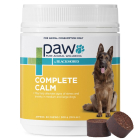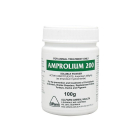
Types of Glaucoma
There are two types of glaucoma your pet can suffer from: primary and secondary. With primary glaucoma, the fluid flows within the eye or out the eye canal. This is actually the opposite of primary glaucoma in humans. Timoptic eye drops and Truspot eye drops can help treat this form of glaucoma.
Secondary glaucoma, on the other hand, is generally caused by an infection that causes the eye to make too much fluid. It can, however, also be caused by a systemic fungal infection or by trauma causing the lens to be shaken loose. As a result, the fluid flow is blocked. Pets are twice as likely to suffer from secondary glaucoma than primary glaucoma, which means the underlying cause of the problem needs to be treated in order to treat the disorder.
Certain breeds of dogs are more likely to develop glaucoma than others. These are the Chow Chow, Basett Hound, Akita, Beagle, Siberian Husky, Maltese, Chihuahua, Norwegian Elkhound, Cocker Spaniel, Dachshund, Fox Terrier, Welsh Springer Spaniel, and Poodle. With these breeds, it is particularly important to have a glaucoma test every 6 months. Cats rarely develop glaucoma and there is no breed more susceptible than others.

Effects of Glaucoma
40% of canines with glaucoma become blind within the first year after diagnosis, even with treatment. Nonetheless, it is important to treat the disease because 50% of pets will develop glaucoma in the other eye of the affected eye is left untreated. In addition, the sudden changes in pressure associated with glaucoma can be extremely painful to your pet. This is particularly true with acute-onset glaucoma, which comes on quickly, as opposed to glaucoma that develops gradually.



